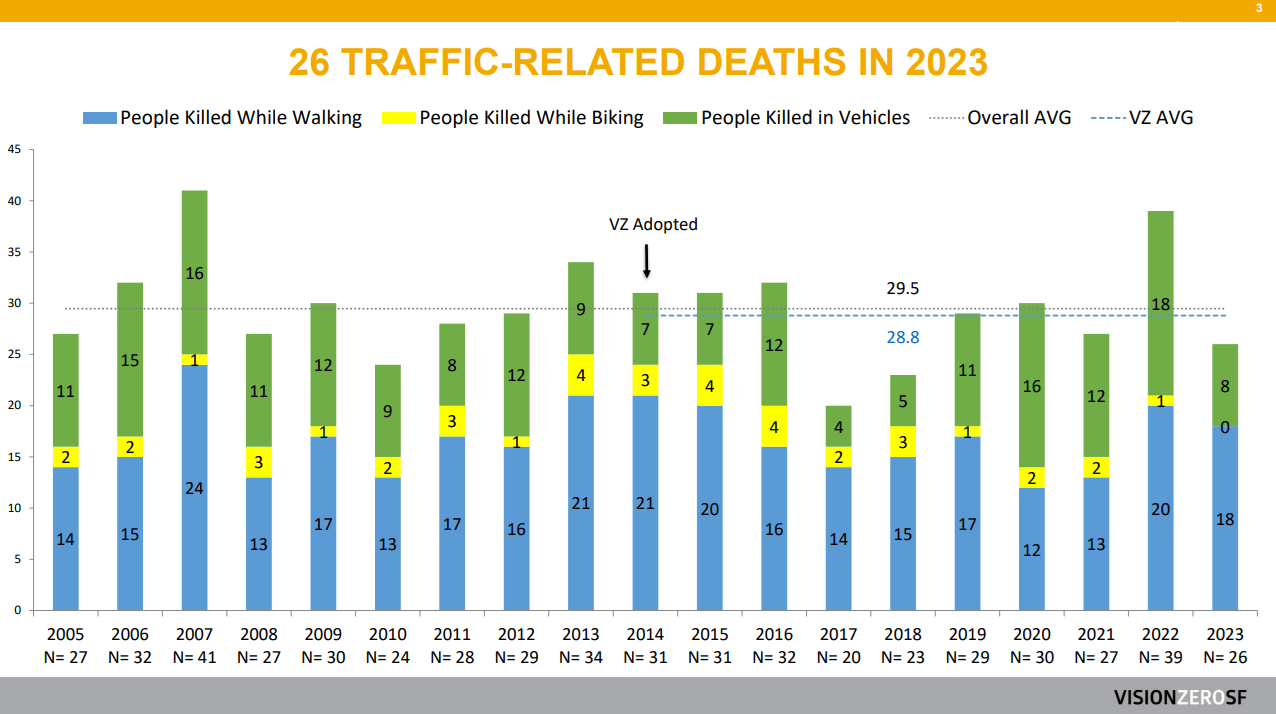
Photo by SFMTA Photography Department
During our September 10 Transportation Authority Board meeting, Vision Zero staff from SFMTA and San Francisco Department of Public Health presented updates on the quick-build program, severe injury and fatalities trends, and what’s next for Vision Zero.
Quick-Build Program
SFMTA is working on a number of quick-build projects, many of which are in the design and outreach phase of work. They recently completed corridor-wide enhancements at Frida Kahlo Way and Guerrero Street and have several projects underway. As part of the quick-build program, SFMTA is also working to increase safety by applying quick-build improvements at each intersection on the Vision Zero High Injury Network – 65% of intersections are complete, with 17% in progress, and 19% of intersections remaining.
SFMTA Quick-Build Program Update (PDF)
Severe Injury and Fatalities Trends Update
San Francisco Department of Public Health staff shared findings from their 2023 Traffic Fatality Report which indicated that a majority of traffic deaths occurred on the San Francisco High Injury Network and almost half in Equity Priority Communities. There were 26 traffic-related fatalities in 2023 and pedestrians were the most vulnerable at 69% of total fatalities, a reduction of 33% compared with 2022.

Vision Zero SF: Severe Injury and Fatalities Trends Update (PDF)
What’s Next for Vision Zero
SFMTA is assessing Vision Zero overall and working on a draft policy, which is expected to be adopted by the end of this year. Based on community outreach, the top Vision Zero priorities include protecting vulnerable road users, making walking, biking, and transit safe and comfortable, and addressing the most dangerous behaviors in severe and fatal crashes. SFMTA’s draft policy themes include:
- Slow speeds: Reduce speeding through speed safety cameras
- Improve choices: Improve the safety and reliability of walking, biking, and transit
- Protect vulnerable people: Eliminate design hazards for those walking, biking, and rolling on a citywide basis
- Ensure accountability: Measure and report progress towards safety improvements